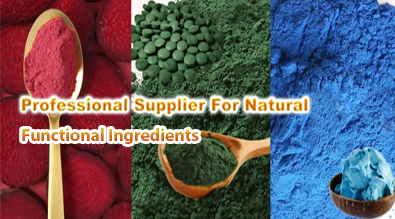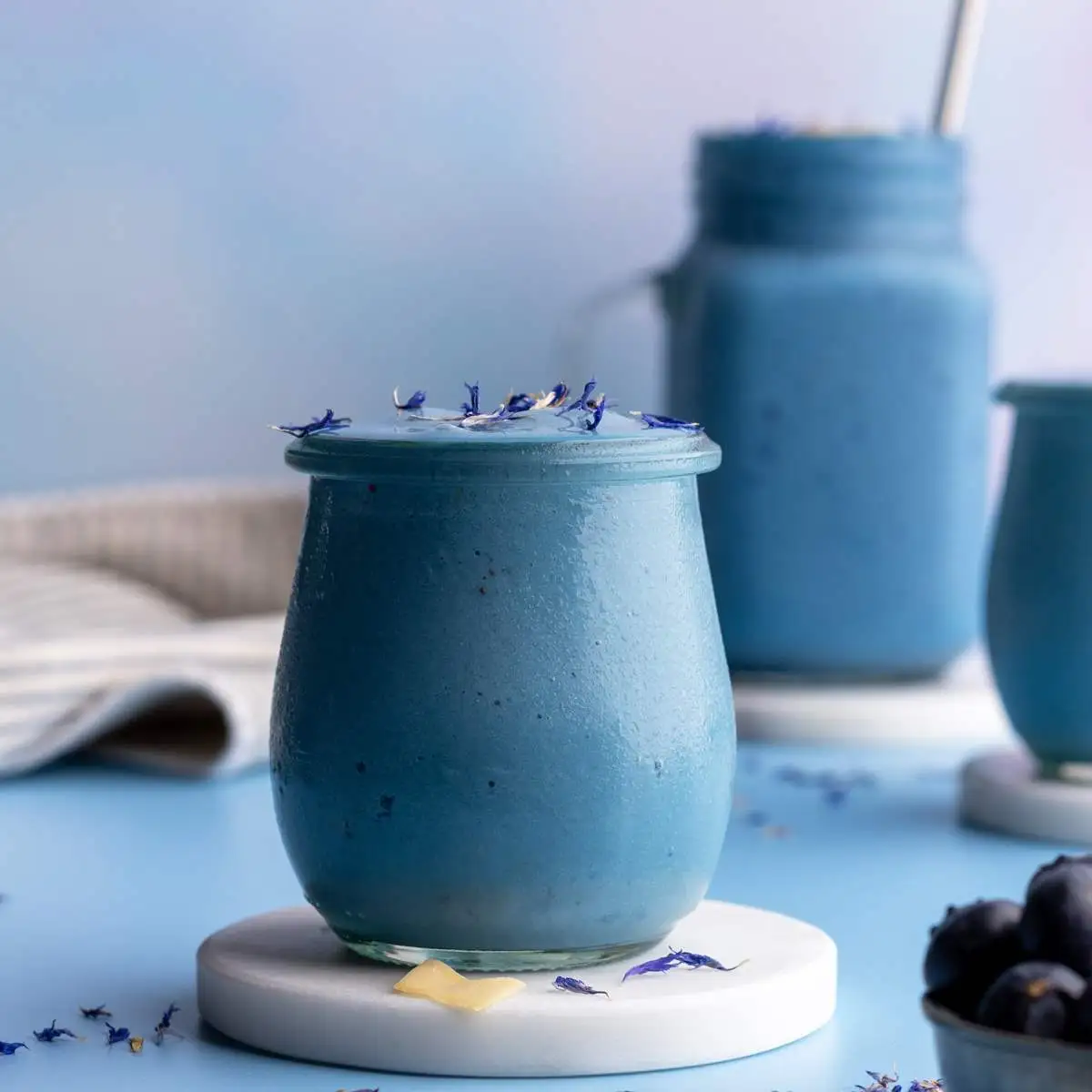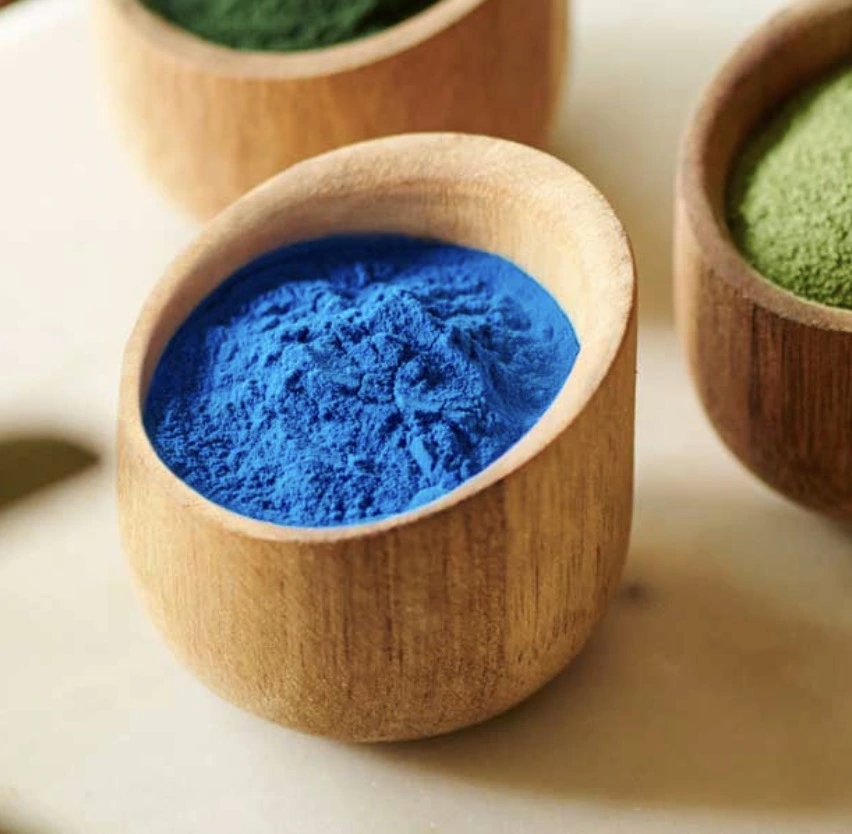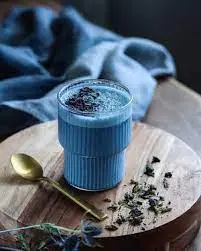Unlocking the Stability of Gardenia Blue Powder in Formulations
Gardenia blue powder, a natural food colorant derived from the Gardenia jasminoides plant, has gained significant popularity in the food and beverage industry. Its vibrant blue hue and natural origin make it an attractive alternative to synthetic colorants. However, maintaining the stability of gardenia blue powder in various formulations can be challenging. This article delves into the factors affecting its stability, best practices for its use, and how it can enhance formulation longevity.

Factors Affecting Gardenia Blue Powder Stability
Understanding the factors that influence the stability of gardenia blue powder is crucial for formulators seeking to incorporate this natural colorant into their products. Let's explore the key elements that can impact its performance:
pH Sensitivity
Gardenia blue powder exhibits a remarkable stability across a wide pH range, typically between 3 and 8. This characteristic makes it versatile for use in various food and beverage applications. However, extreme pH conditions can affect its color intensity and stability. In highly acidic environments (pH < 3), the blue hue may shift towards a purple tone, while in alkaline conditions (pH > 8), it might appear more greenish. Formulators must consider the pH of their final product to ensure optimal color retention and stability.
Temperature Effects
Temperature plays a significant role in the stability of gardenia blue powder. While it demonstrates good heat resistance up to 120°C for short periods, prolonged exposure to high temperatures can lead to color degradation. Cold temperatures, on the other hand, generally do not negatively impact its stability. When developing products that require heat processing or have a long shelf life at ambient temperatures, it's essential to consider the thermal stability of gardenia blue powder and adjust formulations accordingly.
Light Sensitivity
One of the challenges associated with gardenia blue powder is its sensitivity to light. Prolonged exposure to UV rays and strong artificial light can cause fading and color changes. This photosensitivity necessitates careful consideration in packaging design and storage conditions. Opaque or light-resistant packaging materials can help protect products colored with gardenia blue powder from light-induced degradation, preserving their visual appeal throughout their shelf life.

Best Practices for Using Gardenia Blue Powder in Products
To maximize the benefits of gardenia blue powder in various formulations, it's essential to follow best practices that ensure optimal stability and performance. Here are some key strategies to consider:
Proper Dispersion Techniques
Achieving uniform dispersion of gardenia blue powder is crucial for consistent coloration and stability in the final product. To ensure optimal dispersion, it's recommended to first create a concentrated solution by mixing the powder with a small amount of warm water or a compatible solvent. This pre-dispersion step helps break up any clumps and allows for easier incorporation into the main formulation. Utilizing high-shear mixing equipment can further enhance dispersion, especially in viscous or emulsion-based products. It's important to note that over-mixing should be avoided, as it may lead to excessive aeration and potential color changes.
Synergistic Ingredient Combinations
Certain ingredients can work synergistically with gardenia blue powder to enhance its stability and performance. Antioxidants, such as ascorbic acid or tocopherols, can help protect the colorant from oxidation-induced degradation. Natural stabilizers like carrageenan or pectin can improve color retention in liquid formulations by providing a protective matrix. Additionally, combining gardenia blue powder with other natural colorants, such as spirulina or butterfly pea flower extract, can create unique and stable color blends while potentially mitigating individual stability issues.
Optimized Storage Conditions
Proper storage of both the raw gardenia blue powder and finished products is essential for maintaining color stability. Store the powder in a cool, dry place, away from direct sunlight and moisture. Airtight, opaque containers are ideal for preserving its quality. For finished products, consider using packaging materials with UV-blocking properties to protect against light-induced fading. If refrigeration is an option, it can further extend the color stability of products containing gardenia blue powder, especially in beverages and dairy applications.
How Gardenia Blue Powder Enhances Formulation Longevity?
Despite its challenges, gardenia blue powder offers several advantages that can contribute to improved formulation longevity when used correctly. Let's explore how this natural colorant can enhance the shelf life and overall quality of products:
Natural Preservative Properties
Gardenia blue powder contains compounds that exhibit mild antimicrobial properties. These natural preservative characteristics can contribute to extending the shelf life of certain products, particularly in conjunction with other preservative systems. While not a replacement for traditional preservatives, the presence of gardenia blue powder may allow for reduced levels of synthetic preservatives in some formulations. This dual functionality as both a colorant and a natural preservative enhancer makes gardenia blue powder an attractive option for clean label products.
Antioxidant Activity
The chemical composition of gardenia blue powder includes antioxidant compounds that can help protect other ingredients in the formulation from oxidation. This antioxidant activity can be particularly beneficial in products containing lipids or other oxidation-sensitive components. By scavenging free radicals and inhibiting oxidative reactions, gardenia blue powder may contribute to maintaining the overall quality and sensory attributes of the product over time. This added benefit can be especially valuable in functional food and beverage applications where antioxidant properties are desired.
Stability in Multi-Component Systems
When properly formulated, gardenia blue powder can demonstrate excellent stability in complex, multi-component systems. Its ability to maintain color in the presence of various ingredients, such as proteins, carbohydrates, and other natural colorants, makes it versatile for use in a wide range of products. This stability in diverse formulations can lead to improved product consistency and reduced need for color adjustments during the manufacturing process or throughout the product's shelf life. By carefully considering ingredient interactions and optimizing formulation parameters, formulators can leverage the stability of gardenia blue powder to create long-lasting, visually appealing products.

Conclusion
Gardenia blue powder offers a natural and vibrant coloring option for food and beverage formulators seeking alternatives to synthetic dyes. By understanding the factors affecting its stability, implementing best practices for its use, and leveraging its unique properties, manufacturers can unlock the full potential of this natural colorant. As consumer demand for clean label products continues to grow, gardenia blue powder stands out as a versatile and valuable ingredient that can enhance both the visual appeal and longevity of formulations.
For more information on gardenia blue powder and other natural colorants, please contact Yangge Biotech Co., Ltd. at info@yanggebiotech.com. Our team of experts is ready to assist you in developing innovative, stable, and visually appealing products using natural ingredients.
FAQ
Q: Can we get some samples to test before purchasing?
A: Of course, we can provide free samples of 20 to 100 grams, but the shipping cost is at the customer's expense. The shipping cost can be deducted from the next order, or the samples can be sent through your courier account.
Q: Do your products have relevant certifications?
A: Yes, our products are certified for HALAL, ISO, HACCP, Kosher, and other certifications.
Q: What is the minimum order quantity (MOQ)?
A: Small batches of samples can be customized according to your requirements.
Q: Do you offer OEM and ODM services? Can the formula be customized based on our own?
A: Of course, we provide ODM and OEM services to many customers. Our product range includes softgels, capsules, tablets, sachets, granules, and private label services. Simply contact us and let us know your requirements. Our experienced R&D team can also develop new products with specific formulas.
Please contact us to design your own branded products.
Q: How do you handle quality complaints?
A: First, we have a comprehensive quality control SOP. We provide authoritative third-party inspection reports for almost all products before shipment to minimize the possibility of quality issues. Second, we have a comprehensive return and exchange procedure. If there is a genuine quality dispute, we will strictly follow the SOP.
Q: How do you ship? How long does delivery take?
A: For small orders, we typically use DHL, UPS, EMS, FedEx, or TNT. Delivery typically takes 3-7 days. We also offer air and sea freight services. We have a strong freight forwarding team and can provide you with a one-stop service, including DDP and DDU.
Q: What are your payment terms?
A: 100% prepayment, payable by T/T, Western Union, MoneyGram, or PayPal.
Q: What is the shelf life of your products?
A: 2 years with proper storage.
Q: Is the packaging environmentally friendly?
A: We attach great importance to environmental protection and are constantly improving our product packaging. Some products are packaged in recyclable paper. Packaging materials are carefully selected to ensure product safety during transportation and storage, and to minimize environmental impact. We are committed to achieving a balance between environmental friendliness and practicality in our product packaging, and to contributing to sustainable development.
References
1. Smith, J. A., & Johnson, B. C. (2021). Natural Food Colorants: Stability and Applications in Modern Formulations. Journal of Food Science and Technology, 58(4), 1245-1260.
2. Chen, X., Zhang, Y., & Liu, R. (2020). Gardenia Blue: A Comprehensive Review of Its Chemistry, Stability, and Food Applications. Critical Reviews in Food Science and Nutrition, 60(15), 2576-2590.
3. Wang, L., & Li, S. (2019). Enhancing the Stability of Natural Colorants in Food Systems: A Review of Recent Advances. Trends in Food Science & Technology, 92, 13-25.
4. Rodriguez-Amaya, D. B. (2018). Natural Food Pigments and Colorants. Current Opinion in Food Science, 20, 62-67.
5. Martins, N., Roriz, C. L., Morales, P., Barros, L., & Ferreira, I. C. (2017). Food Colorants: Challenges, Opportunities and Current Desires of Agro-Industries to Ensure Consumer Expectations and Regulatory Practices. Trends in Food Science & Technology, 52, 1-15.

Based on your location and order quantity, you will have the opportunity to receive a limited time free shipping promotion!

Who we are


